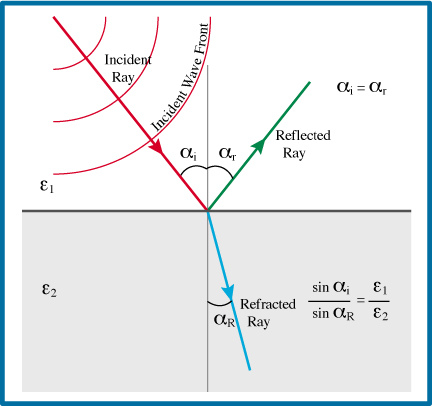
When a wave encounters an interface between materials of different properties, the wave may be refracted, reflected, or both. Snell's Law describes the reaction of light to a boundary between materials of different dielectric contrasts (or refractive index), based on the angle at which a ray perpendicular to the wave front hits the interface. The angle of the incoming ray (Angle of Incidence: ai) is equal to the angle of reflection (ar). The Angle of Refraction (aR) is determined by the ratio of the sines of the Angle of Incidence to the Angle of Refraction and the ratio of the dielectric constants for the upper and lower layers (e1 and e2).

There is a point where the Angle of Incidence is large enough (close to horizontal) that there is no refraction. This is called the Angle of Critical Refraction where all the incoming waves are either reflected or refracted along the interface. Ay angles larger than the Angle of Critical Refracion result in only reflection.
![]() Return to Main Radio-Echo Sounding Page
Return to Main Radio-Echo Sounding Page
Updated: August 03, 2011
© 1998, Brian C. Welch,
Univ. of Wyoming